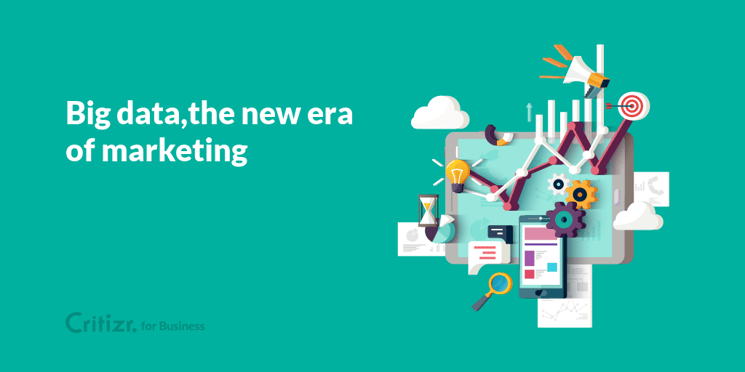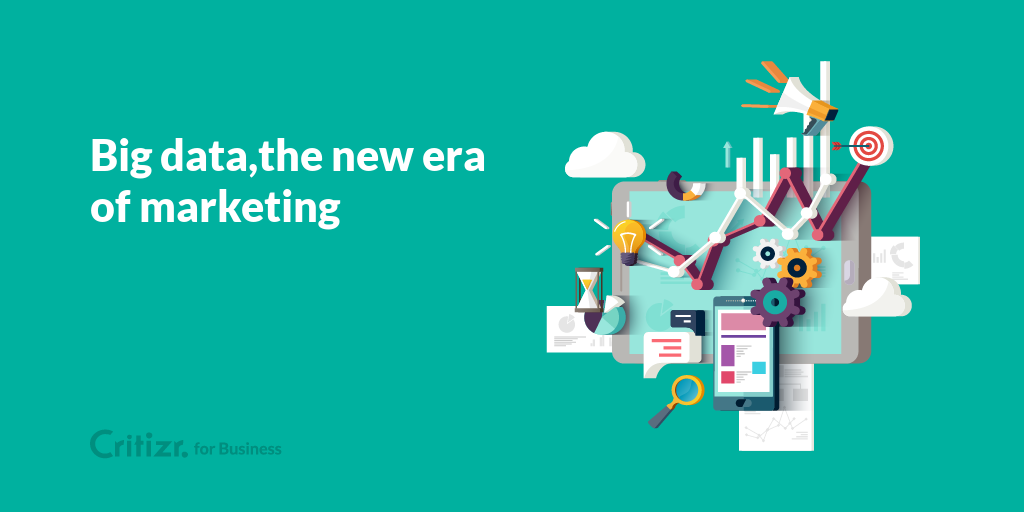
Solutions
Solve your most critical customer experience challenges

Marketing Manager - France


“90% of the world’s data has been produced in the past two years.” This is the new world we’re living in when it comes to marketing. Hyperproduced data, kicked off by tech giants such as Google, Facebook and Amazon, is totally changing the game.
The advent of big data comes as a result of many factors with advances in technology coming in at number one. High-performing solutions have been created specifically to deal with massive volumes of data. Meanwhile, feedback collection methods via mobile technology, connected devices, CRM, etc. have multiplied. Two more factors that have bolstered this unprecedented data boom include general social media usage and the digitisation of business.
What's more, this data is like a goldmine when you look at the current problems affecting marketing strategy. Markets are saturated and highly competitive. Classic advertising techniques are gradually having less impact; it is harder to captivate consumers by using mass publicity. These days, consumers are in the know and more self-reliant making them very unpredictable. Customers now change brands as often as they change clothes and it is difficult to win their loyalty.
In the current economic environment, data plays a key role in developing an effective marketing strategy, both in terms of customer acquisition and loyalty. The most successful companies are all using it—just look at Airbnb or Uber. By using big data when making strategic decisions, they’re providing a fully-optimised and personalised user experience.
The rise in data collection tools used on people and objects has resulted in an exponential amount of information. There is a huge variety of these tools, coming from all over and in wide-ranging formats. The volumes and types of data, as well as the speed at which it is collected, amounts to very complex analysis.
However, that hasn’t stopped major companies from investing large sums in collecting data and using it to the full. According to a study conducted by MarketsandMarkets, the market value of big data is set to reach almost $67 billion by 2021. In other words, that’s an annual growth rate of 18.45% over the next five years. The value of data is constantly growing and new jobs such as “data scientists” are quickly cropping up.
In terms of opportunities, big data usage is about to become indispensable for companies. It’s the ultimate challenge for marketing strategists: entering the realm of big data quickly to avoid falling behind the competition, especially data giants like Amazon, the current leader in the race.
DOWNLOAD THE E-BOOK: Customer reviews : the new era of feedback-driven marketing

This is the current situation and the average retailer seems to be suffering as a consequence. Clearly, data collection is much easier for pure player retailers. A considerable volume of data can be gathered through the Internet. This data can be collected following a customer interaction, such as a purchase, a visit to the website, or a request. It can also be generated automatically via comments and spontaneous feedback left by a customer, or via open data—any information that can be freely accessed online. This is a goldmine for online retailers who use them to devise their strategies.
Predictive marketing is yet another example: predicting customer behaviour based on very precise data. Data collection also presents opportunities for brands to develop one-to-one marketing strategies, offering a personalised customer experience within a specific context. High-performing marketing strategies have been devised using data. Look at Pretzel Chips: they boosted sales by over 80% by targeting hungry social network users. The result? Home snack delivery on demand.
DOWNLOAD THE E-BOOK: Customer reviews : the new era of feedback-driven marketing
Faced with such strong competition, retailers need to start using feedback tools adapted to their business to gain better customer knowledge. In this quest, the best strategy is to introduce an omnichannel approach. As such, retailers will be able to find data collected on both online and offline channels.
ROPO strategies (Research Online, Purchase Offline) should be a key data collection tool. They help drive internet traffic towards the retail outlet. This often happens when using services such as click & collect. Take Starbucks, for example. You can order a product at home and pay for it in-store via an app with no need for your wallet. The app has been hugely successful across the Atlantic and has just been launched in Europe.
Home delivery, personalised loyalty programmes, touchscreen kiosks and in-store customer feedback collection are other beneficial ways for a retailer to catch up on data collection. These ideas all fall into the “phygital” approach to marketing, i.e. merging the digital and physical retail worlds. This approach could really help retailers remain competitive.
There is a new game-changer in the marketing world: the era of big data. The biggest online companies are already taking the lead in terms of big data, collecting vast amounts of information. This data has become central to marketing strategy, particularly for conventional retailers who are lagging behind online retailers. Among these waves of data, customer satisfaction levels are a key factor in offering a “unique” customer experience. Start thinking about how you can place customer feedback at the centre of your marketing strategy!
Hear about our upcoming events and read the latest success stories from our clients.
